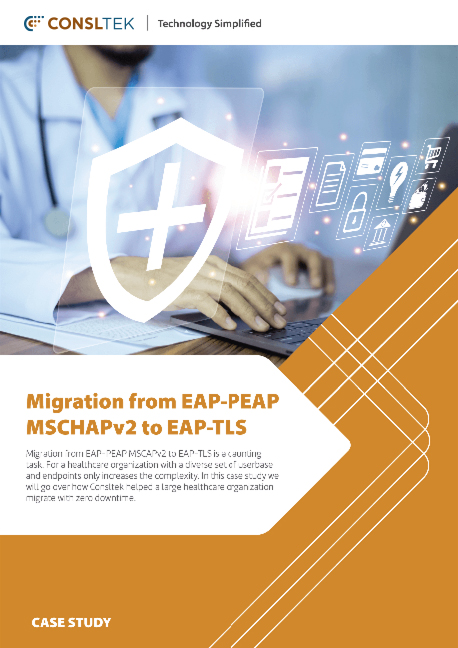Table of Content
- Introduction: Navigating the SASE Minefield with Expert Guidance
- Why SASE is a Minefield
- The Contrarian Take On SASE Implementation
- Vendors vs Managed SASE Experts
- Looking for SASE implementation services?
- Conclusion: The Expert Edge in SASE Implementation
Introduction: Navigating the SASE Minefield with Expert Guidance
Welcome to a comprehensive article that aims to demystify the complexities of implementing Secure Access Service Edge (SASE) in Healthcare businesses.
In the ever-evolving landscape of cybersecurity, SASE has emerged as a buzzword. But it’s not all sunshine and rainbows; implementing SASE is akin to navigating a minefield.
This article will delve into the inherent challenges you’ll face, from a diverse vendor landscape to compliance issues.
But here’s the kicker: you don’t have to go it alone. We introduce the concept of Managed SASE Services Providers, such as ConsItek Inc., a seasoned player with two decades of experience in IT Systems Integration.
By the end of this article, you’ll not only understand the pitfalls but also appreciate the irreplaceable value of expert guidance. So, are you ready to navigate this complex terrain with a trusted sherpa?
Why SASE is a Minefield
Navigating the SASE landscape is like walking through a maze with hidden traps. Let’s plunge deeper into why it’s so complex.

- Diverse Vendor Landscape
The SASE market is a bustling bazaar with a plethora of vendors, each offering a unique set of components. Not all the vendors are suitable for all companies.
While choice is good, too much of it can lead to decision paralysis.
Recent reports indicate a 48% year-over-year growth in the single-vendor SASE market compared to a 35% growth in the multi-vendor approach. The diversity in vendor offerings can create confusion, making it challenging to select the most suitable solution for your organization.
- Integration Challenges
The term “seamless integration” is often thrown around, but achieving it is a monumental task. SASE requires various components and system elements to work in harmony, which is easier said than done.
The challenges are not just technical but also organizational.
For instance, SASE demands greater collaboration between networking and security teams. The integration process can be fraught with difficulties, especially when dealing with legacy systems.
- Rollout Risks
Imagine setting up a domino arrangement; one wrong move and the entire setup collapses.
Similarly, a flawed SASE rollout can jeopardize your entire network. The stakes are high, and the margin for error is thin.
Implementing SASE successfully is not as straightforward as some vendors make it out to be.
- Compliance and Regulatory Concerns
In industries like healthcare and finance, where regulations are stringent, the stakes are even higher.
Non-compliance with data privacy laws can result in hefty fines and reputational damage. Ensuring compliance while implementing a complex solution like SASE is a tightrope walk.
So, are you ready to navigate this minefield alone, or would you rather have an expert guide you through it?
The Contrarian Take On SASE Implementation
You might be tempted to think an in-house team can handle these SASE implementation challenges. But can they really, when the stakes are this high?

The False Allure of In-House Implementation
The idea of keeping things “in-house” has its appeal.
You have full control, and there’s a sense of ownership. You might think that your team, who knows the ins and outs of your organization, is best suited for the job.
But let’s dissect this notion.
- The Hidden Costs
While it may seem cost-effective initially, the hidden costs can add up.
These include the cost of training your team, the time spent on research, and the potential for errors.
Not to mention, the cost of failure in SASE implementation can be astronomical.
- Expertise Gap
SASE is a relatively new approach to networking and security.
Your in-house team may lack the specialized knowledge required for a smooth implementation. This expertise gap can lead to flawed decisions and, ultimately, a compromised network.
- The Complexity of Managed SASE
Managed SASE can offer a single provider for deployment and management of WAN and Security infrastructure.
The question is, can your in-house team match this level of integration and management?
- The Risk Factor
The risk associated with SASE implementation is high.
A cloud-based distributed architecture, centralized management, and endpoint-specific security policies are just some of the complexities involved.
Can your team navigate this intricate web without faltering?
So, are you willing to bet your organization’s security on the belief that your in-house team can handle the complexities of SASE?
In summary, while the idea of in-house SASE implementation may seem attractive, the risks and challenges involved make a strong case for expert intervention.
Vendors vs Managed SASE Experts

You may wish to ask the question about vendors helping with System Integration.
After all they are being paid for the solution aren’t they?
So what exactly is the role of the Managed SASE Services provider in all this.
Let’s answer this.
Vendor’s Role In SASE Implementation | Managed SASE Provider’s Role |
|
|
The Verdict
- Both SASE vendors and SASE system integrators play crucial roles, but their responsibilities differ.
- Vendors focus on providing the technology and may offer some level of integration support. The Vendor focus is on selling their system and maximizing their revenues.
- Managed SASE Service Providers, on the other hand, specialize in the audit, vendor selection, actual implementation, including planning, testing, and ongoing support.
So, who’s your go-to for integration issues?
It depends on the nature of the issue.
- For technology-specific challenges, the vendor is your best bet
- For audits, broader implementation concerns, and ongoing support a system integrator would be more appropriate.
Would you agree that a successful SASE implementation is a team effort involving both you, the vendors and system integrators?
Looking for SASE implementation services?

At Consltek Inc., we’ve got you covered with a comprehensive range of SASE Service offerings:
- Specialized Security Audit: We conduct specialized audits to pinpoint security gaps in your system.
- Tailored Solutions: Our solutions are customized to fit your needs precisely, without any vendor fluff.
- Vendor Selection: We offer unbiased vendor selection based on your unique requirements.
- Risk Reduction: With our technical expertise, we streamline integration and minimize risks.
- Staff Training: We provide comprehensive staff training on new systems.
- Ongoing Support: Count on us for continuous SASE implementation support to ensure your security stays robust and up-to-date.
Trusting Consltek Inc. for your SASE implementation needs means you’ll have a reliable partner to cover all aspects of your security and efficiency requirements.
Conclusion: The Expert Edge in SASE Implementation
Navigating the minefield of SASE is not for the faint of heart. The challenges are many, and the stakes are high.
From the diversity of SASE vendors to the intricacies of integration, rollout risks, and compliance concerns, the path is fraught with potential pitfalls. While the allure of in-house implementation may seem tempting, the hidden costs and risks make a compelling case for expert intervention.
That’s where ConsItek Inc. comes into play. With their two decades of experience, full-service capabilities, and a proven track record, we offer more than just a service; we offer peace of mind. Engaging with us is straightforward, and the benefits are immeasurable.
So, why gamble with your organization’s security and efficiency when you can engage a proven expert in SASE?
The real question is, can you afford not to? Take the next step with ConsItek Inc. and ensure that your journey through the SASE landscape is not just safe but also efficient.
Intrigued? Dive into the additional SASE resources to deepen your understanding and take informed action.


0 Comments